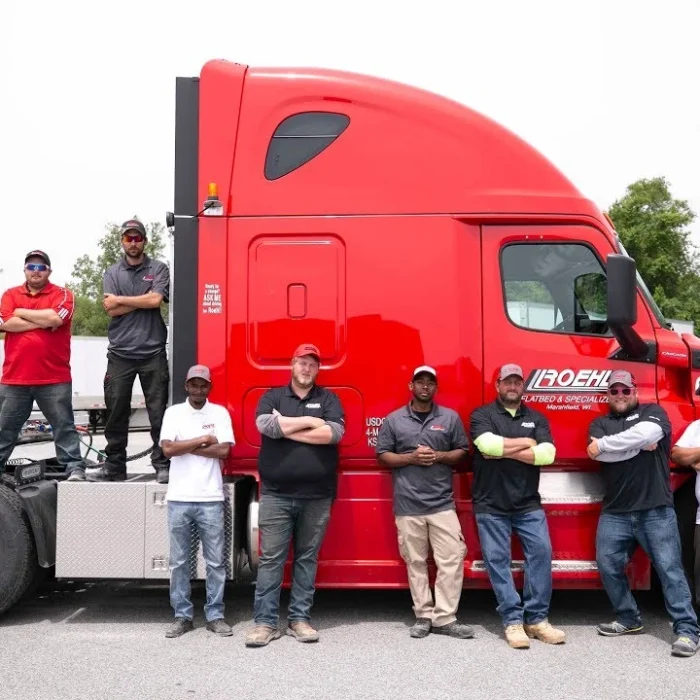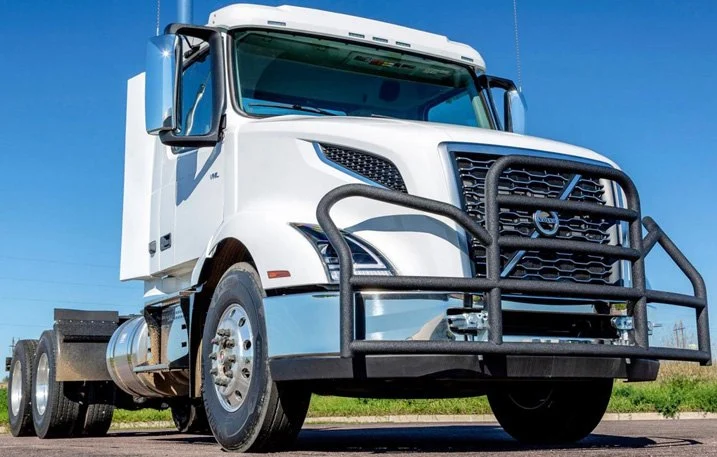Understanding Semi Truck Classifications
Truck classifications are important for various reasons, and understanding them can help you make informed decisions about which type of truck is best suited for your needs. So, what exactly are semi truck classifications, and why do they matter?
Why Truck Classifications Matter
Truck classifications provide a standardized way to categorize and compare trucks based on their capabilities and usage. They also help determine the necessary licenses, permits, and insurance required for operating the truck. Additionally, these classifications play a crucial role in ensuring safety on the roads, as they ensure drivers have the appropriate training and expertise to handle the vehicle they’re operating.

How Trucks Are Classified
Trucks are primarily classified based on two factors: Gross Vehicle Weight Rating (GVWR) and Gross Combination Weight Rating (GCWR). Let’s take a closer look at these two factors:
Gross Vehicle Weight Rating (GVWR)
GVWR is the maximum weight a truck can safely carry, including the weight of the truck itself, passengers, cargo, and any additional equipment. It is determined by the manufacturer and is a key factor in classifying trucks.
Gross Combination Weight Rating (GCWR)
GCWR is the maximum weight of a loaded truck and its attached trailer. This rating is essential for determining the proper classification of semi trucks, as it takes into consideration the combined weight of the truck and trailer.

Classes of Semi Trucks
Semi trailer trucks are classified into various classes, ranging from truck tractors to severe duty trucks. Let’s explore these classifications in more detail:
Class 1-3: Light Duty Trucks
These trucks typically have a GVWR of less than 14,000 pounds and are often used for local deliveries, landscaping, and light construction work. Examples of light duty trucks include pickup trucks and cargo vans. They are smaller and usually closer to commercial vehicles with a better fuel efficiency.
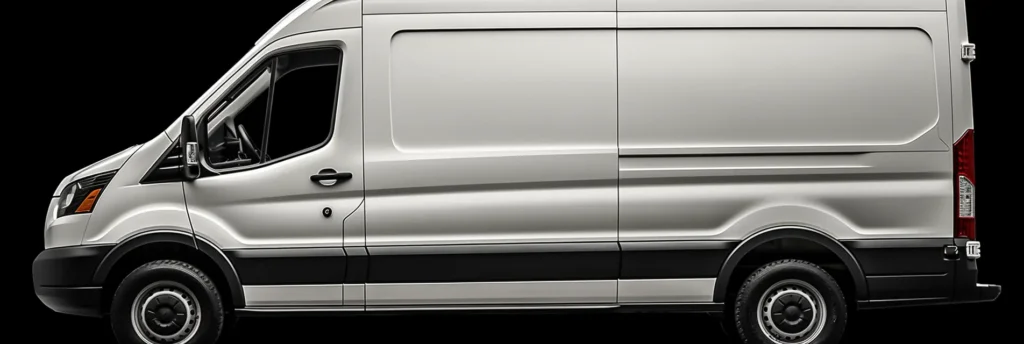
Class 4: Medium Duty Trucks
Medium duty trucks fall into Class 4, with a GVWR between 14,001 and 16,000 pounds. These trucks are often used for heavier construction work, towing, and larger deliveries. Examples of medium duty trucks include small box trucks and flatbed trucks. Most common in the freight transportation and long haul transport, usually including sleeper cabs.
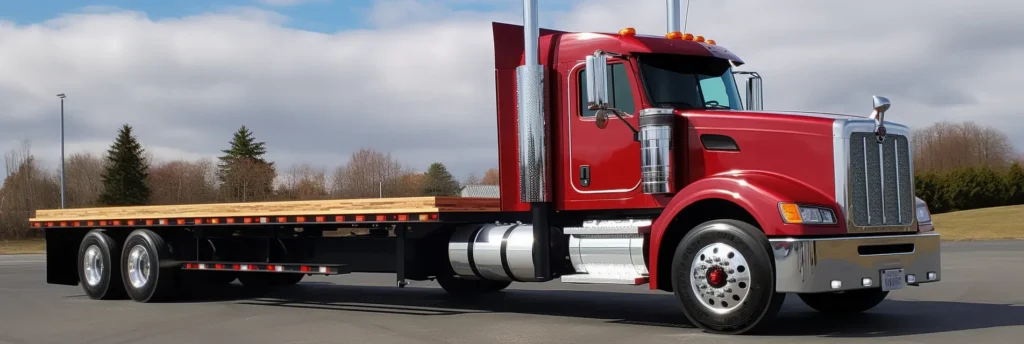
Class 5: Heavy Duty Trucks
Class 5 trucks have a GVWR between 16,001 and 19,500 pounds. They are used for demanding applications such as large-scale towing, transportation of heavy equipment, and heavy construction work. Examples of heavy duty trucks include large flatbed trucks and tow trucks. These are the big rigs all they now is power.
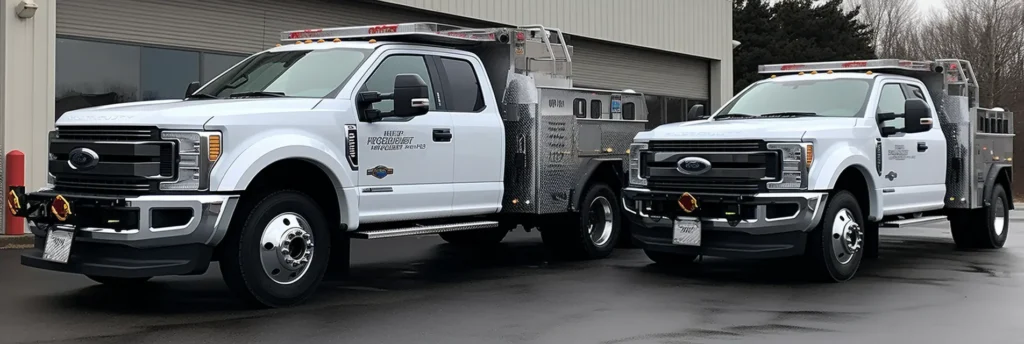
Class 6-7: Extra Heavy Duty Trucks
These trucks have a GVWR between 19,501 and 33,000 pounds. They are primarily used for long-haul transportation, delivery of heavy equipment, and specialized applications such as garbage collection or fire and rescue operations. Examples of extra heavy duty trucks include beverage trucks, dump trucks, and bucket trucks.

Class 8: Severe Duty Trucks
Class 8 trucks are the largest and most powerful, with a GVWR of over 33,000 pounds. They are designed for the most demanding applications, such as long-haul transportation, heavy construction, and specialized industries like logging and mining. Examples of severe duty trucks include tractor-trailers, concrete mixers, and heavy haulers.

Factors That Determine Truck Classifications
Several factors play a role in determining a truck’s classification. Let’s take a look at some of the most important ones:
Truck Configuration
The configuration of a truck, such as the type of axle configuration, of cab, chassis, and body, can impact its classification. For example, a truck with a sleeper cab and a fifth-wheel hitch will typically fall into a higher classification than one with a standard cab and no hitch.
Load Capacity
The load capacity of a truck, which is determined by its GVWR and GCWR, is a crucial factor in its classification. Trucks with higher load capacities are usually placed in higher classifications, as they are designed to handle more demanding tasks.
Application & Industry
The intended application and industry for a truck can also influence its classification. For example, a truck designed for heavy construction work will likely fall into a higher classification than one intended for local deliveries or light landscaping tasks.
Self Driving Semi Trucks – the new frontier of self driving semi trucks, the biggest players out there and everything you need to fully understand it.
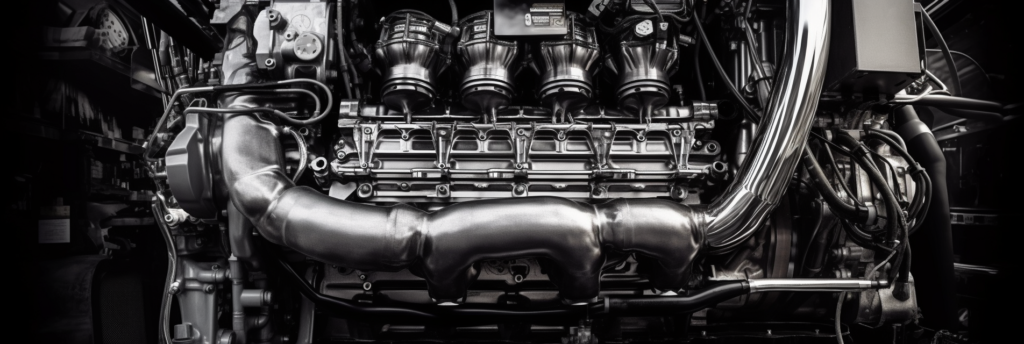
The Truck Tractors of The Trucking Industry
Semi trailer trucks, also known as tractor-trailers, big rigs, or 18-wheelers, are a type of heavy-duty truck designed for long-haul transportation and hauling large quantities of cargo. They consist of a towing engine or tractor, which is connected to a semi truck tractor-trailer that carries the freight. These vehicles are typically found in Class 8 of the truck classification system, as they have a GVWR of over 33,000 pounds.
Key Components of Semi Trailer Trucks
Semi trailer trucks are made up of several key components that work together to create a powerful and efficient vehicle for moving goods over long distances. These components include:
Tractor: The tractor is the front part of the semi-trailer truck that houses the engine, transmission, and cab where the driver operates the vehicle. It is responsible for providing the power necessary to tow the semi-trailer.
Fifth-Wheel Hitch: This critical component connects the tractor to the semi-trailer, allowing the trailer to pivot and swivel as the truck moves, ensuring smooth navigation of turns and curves.
Semi-Trailer: The semi-trailer is the large, detachable container that carries the cargo. It is designed to distribute the weight of the load across the axles of both the tractor and the trailer, providing stability and balance.
Axles: Semi trailer trucks have multiple axles, with the tractor typically having two or three and the trailer having at least two. Axles provide support for the weight of the vehicle and cargo while allowing the wheels to rotate freely.
Landing Gear: The landing gear is a set of retractable legs that support the semi-trailer when it is not connected to the tractor. This allows the trailer to stand on its own while it is being loaded or unloaded.
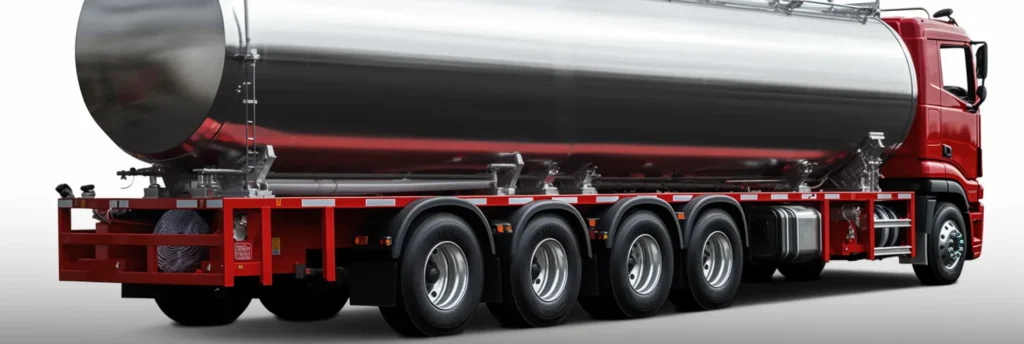
Common Types of Semi Trailers
There are various types of semi-trailers designed for specific cargo and industries. Some common types include:
Dry Van Trailers: These enclosed trailers are used for transporting general, non-perishable goods. They protect the cargo from weather and provide a secure environment for shipping.
Refrigerated Trailers: Also known as reefer trailers, these are insulated and temperature-controlled to transport perishable goods, such as food and pharmaceuticals.
Flatbed Trailers: Flatbed trailers have a level, open platform with no sides or roof, making them suitable for transporting oversized, heavy, or oddly shaped cargo.
Tanker Trailers: These cylindrical trailers are designed for transporting liquid or gaseous cargo, such as fuel, chemicals, or water.
Lowboy Trailers: Lowboy trailers have a low deck height and are used for transporting tall, heavy equipment like construction machinery or military vehicles.

The Importance of Semi Trailer Trucks in Modern Logistics
Semi trailer trucks play a crucial role in modern logistics and supply chain management. They enable efficient transportation of goods over long distances, helping businesses meet the ever-growing demands for products and services. By understanding the different types of semi-trailers and their capabilities, businesses can optimize their logistics operations and ensure timely delivery of goods to their customers.
Electric Semi Trucks – the future of electric semi trucks and how they will affect the modern logistics.

New VS Used Semi Trailer Truck
When purchasing a semi-truck, one of the critical decisions you’ll need to make is whether to buy a new or used vehicle. Both options have their advantages and disadvantages, and the best choice will depend on factors like budget, intended use, and personal preferences. In this section, we’ll explore the key differences between used and new semi trucks for sale, to help you make an informed decision.

Advantages of Buying a New Truck
Latest Technology: New trucks come equipped with the latest technology, such as advanced safety features, fuel-efficient engines, and modern emissions systems. This can result in a more comfortable driving experience, lower operating costs, and better compliance with regulatory requirements.
Warranty Coverage: New trucks typically come with a manufacturer’s warranty, which can provide peace of mind by covering the cost of repairs or replacements for a specified period or mileage. This can help minimize unexpected expenses and keep your truck on the road.
Customization: When buying a new truck, you can often customize the vehicle to meet your specific needs, such as choosing the engine, transmission, cabin configuration, and additional features. This can result in a truck that is better suited for your specific applications and preferences.

Advantages of Buying a Used Truck
Lower Purchase Price: One of the most significant benefits of buying a used truck is the lower initial cost compared to a new vehicle. This can make it more accessible for those with a limited budget or allow you to invest in additional equipment or upgrades.
Lower Depreciation: Trucks, like all vehicles, depreciate over time, with the most significant drop in value occurring in the first few years of ownership. Buying a used truck allows you to avoid this initial depreciation hit, which can result in a better resale value down the line.
Proven Reliability: A well-maintained used truck with a solid service history can be a reliable option, as any potential issues or recalls have likely been addressed by the previous owner. Additionally, you can often find user reviews and feedback online, which can provide insight into the truck’s performance and reliability.

Factors to Consider When Choosing Between New and Used Trucks
Budget: Your budget is a significant factor in determining whether a new or used truck is the right choice for you. Consider not only the initial purchase price but also the ongoing costs of maintenance, insurance, and fuel efficiency.
Intended Use: Consider how you plan to use the truck and the specific requirements of your operations. If you need a truck with specific features or capabilities that are only available in newer models, a new truck may be the better option.
Maintenance and Repair Costs: While used trucks may have a lower purchase price, they can also come with higher maintenance and repair costs, especially if they have not been well-maintained. Be sure to factor in these potential expenses when making your decision.
Availability: Depending on your location and the type of truck you’re looking for, the availability of new and used trucks may vary. This can impact your ability to find the right truck at the right price.

Final Thoughts
Understanding semi truck classifications is essential for making informed decisions about the type of truck that best suits your needs. By considering factors such as GVWR, GCWR, truck configuration, load capacity, and intended application, you can ensure that you select the right truck for the job. With this knowledge in hand, you’ll be better equipped to navigate the world of semi trucks and their various classifications.
Common Questions
What is the primary difference between GVWR and GCWR?
GVWR is the maximum weight a truck can safely carry, while GCWR is the maximum combined weight of a loaded truck and its attached trailer.
Why are semi truck classifications important?
Truck classifications help determine the necessary licenses, permits, and insurance required for operating the truck, ensuring safety on the roads and enabling comparisons of trucks based on their capabilities and usage.
Can the classification of a truck change?
In some cases, modifications or upgrades to a truck can change its classification. However, it’s essential to ensure that any changes meet the safety and regulatory requirements for the new classification.
How do truck classifications affect driver requirements?
Different truck classifications may require drivers to have specific licenses, endorsements, or training to ensure they have the appropriate skills and expertise to safely operate the truck.
Do all countries use the same truck classification system?
While many countries use similar classification systems, there may be slight variations in the weight ranges or other criteria used for classification. Always check local regulations to ensure compliance with truck classifications in your area.




